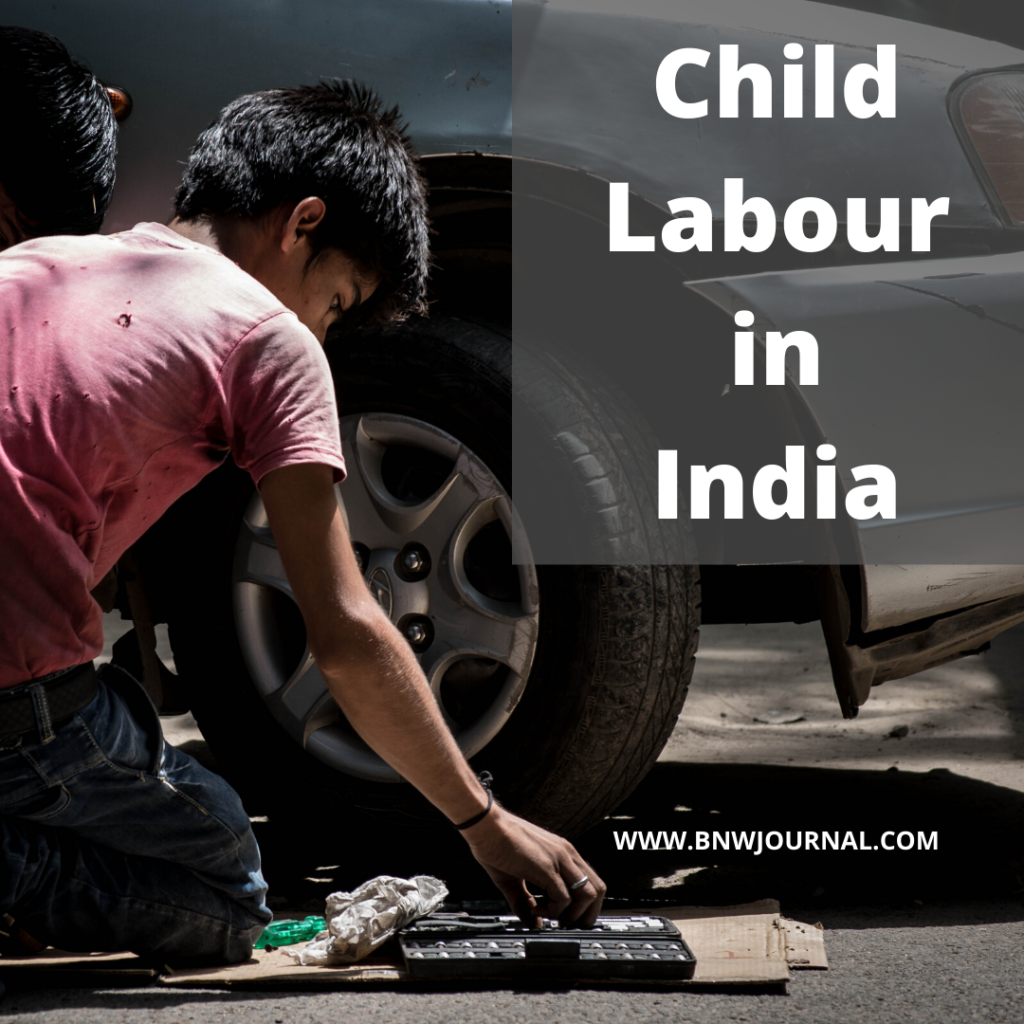![]()
“There can be no keener revelation of a society’s soul than the way in which it treats its children.”
Nelson Mandela

Introduction
The prevalence of child labour is one of the oldest problems and an ongoing issue confronting the world at large, especially developing countries such as India. The main reason which gives rise to child labour is widespread underemployment and unemployment among the adult poor class of the population.
Families with low income, illiteracy and ignorance of parents about the importance of education, the impact of labour on the health of their children and lack of educational facilities are some of the reasons which create child labour. Child abuse comes in many various forms and they are; sexual, physical, emotional. People obliterated the fact that children have a voice and they need to be heard and protected. Child labour is a major problem in India. It is a very tough challenge face by the country
Education is a very important part of development. Children who become child labour are drive there. Because of bad financial conditions, lack of schooling and engagement of family for daily needs. Poverty is consider as one of the contributory factors in child labour.[1] Child labour can be control by economic development increasing awareness and making education affordable across all levels, and enforcement of anti-children labour laws.[2]
Causes of Child Labour
No single factor cause can be isolate for the prevalence of child labour. It is a combination of several factors. The causes that lead to child labour are 1) poverty 2) parental illiteracy and ignorance, the tradition of making children learn the family skills 3) non-availability of and non-accessibility to schools 4) absence of universal compulsory primary education 5) non-availability of and non-accessibility to schools 6) irrelevant and non-attractive school curriculum 7) social and cultural environment, in formalization of production, employment’s preference to children for their cheap labour and inability to organize against exploitation 8) family work 9) level of technology 10) apathy of trade unions.
Child labour often creates a vicious cycle of poverty, as a child coming from an impoverish family surviving harsh conditions becomes an unskilled, debilitate adult who is not employ even in the industry that exploite him/her earlier. They have no rights as workers and cannot join trade unions.
Legal provisions against child labour in India
Article 24 in the Constitution of India directs that no child under the age of 14 years shall be employed in any mine or engaged in any hazardous employment and any contradiction of this provision shall be an offence punishable in accordance with law. In Article 39(e), the directive principles of state policy provide that the health and strength of workers, men and women, and the tender age of children are not abused and that citizens are not forced by economic necessity to enter things which are not proper for their age or strength. Article 39 (f) says that the Children are given opportunities and facilities to develop in a healthy manner and conditions of freedom and dignity.
It has been made the duty of the state to raise the level of nutrition and the standard of living and to improve public health. Rules to control and regulate child labour in India has existed for several decades.
Acts for abolition of Child labour
There are a number of enactments in the country which protect and safeguard the interest of child labour. The employment of children below 14 years of age has been prohibited under 1) The Children (Pledging Labour) Act, 1933. 2) The Factories Act, 1948. 3) The Mines Act, 1952. 4) The Motor Transport Workers Act, 1961. 5) The Bidi and Cigar Workers (Conditions of Employment) Act, 1966. 6) The Plantation Labour Act, 1951.
In 1979, the Government created the first committee called Gurupadswamy Committee to study and analyse the issue of child labour and to suggest measures to tackle it. The Committee analysed the problem in detail and made recommendations.[3] According to the recommendations of Gurupadswamy Committee, the Child Labour (Prohibition & Regulation) Act was enacted in 1986. The Child Labour (Prohibition and Regulation) Act had strictly forbidden the employment of children below the age of 14 in hazardous occupations identified in a list by the law. The list included 83 occupations (as defined in Factories Act, 1948, etc.) In consonance with the above approach, a National Policy on Child Labour was formulated in 1987.
Conclusion
To conclude, to prevent the scourge of child labour, attitudes have to change among different social groups and the passivity or indifference must give way to understanding, anger and the will to take actions. But only one factor and the idea cannot fight against child labour. Focusing on grassroots strategies to mobilize communities against child labour and reintegration of child workers into their homes and schools has proven crucial to breaking the cycle of child labour. Many NGOs like Child Rights and You, CARE India, Global March Against Child Labour, etc., have been working to eradicate child labour in India. In this way, the goal to eliminate child labour can be completed.
References:
[1] Health hazards among working children in Texas. Cooper SP, Rothstein MA South Med J. 1995 May; 88(5):550-4. [PubMed] [Ref list]. (n.d.).
[2] Geneva: ILO; 1992. ILO (International Labour Office). World Labour Report 1992. [Google Scholar] [Ref list]. (n.d.).
[3] Ministry of Labour and Employment, Government of India. (n.d.).



0 Comments